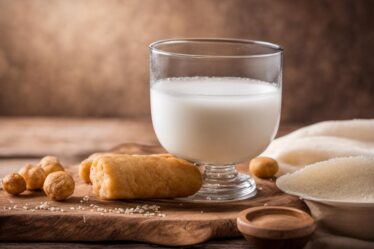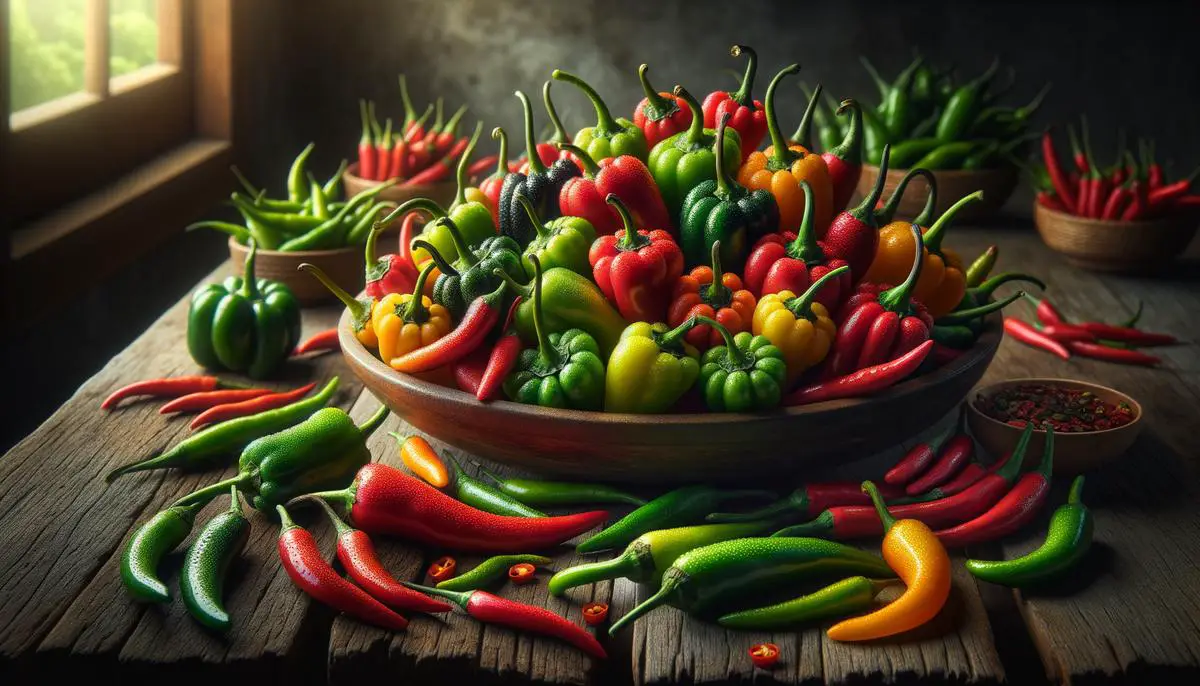
Varieties and Heat
Thai chili peppers are known for their vibrant colors and intense heat, with a diverse range of varieties. The heat levels span widely, appealing to various tastes. From the relatively mild prik yuak, loved for its sweet undertones, to the fiery prik kee noo, which translates to “mouse droppings” for its small but potent presence, the range is extensive.
The prik yuak, often seen in green or yellow, brings a milder, sweeter flavor, perfect for those cautious with spice or looking to add a gentle heat. In contrast, the prik jinda boasts a robust kick, making it a go-to for adding depth to Thai curry pastes.
The prik chee fah transitions from a milder green to a fiery red as it matures, offering versatility in heat based on its color. The prik kee noo sits at the pinnacle of heat, challenging the brave with its sharp, piercing spice.
Each type of Thai chili presents its own unique characteristics, suitable for different culinary uses — from enhancing the freshness in salads with milder varieties to emboldening fiery stir-fries and curries with the hotter ones.
On the Scoville Scale, Thai peppers range from 50,000 to over 100,000 SHU. This scale quantifies the heat and reflects the rich culinary heritage that embraces spice. It’s not just about enduring the heat; it’s about savoring the distinct flavors each variety brings.
In cooking, understanding these heat levels and varieties is crucial, allowing chefs and home cooks to balance flavors, ensuring dishes that are pleasing to the palate. Thai chili peppers offer a spectrum of possibilities to explore, making each meal a flavorful journey.
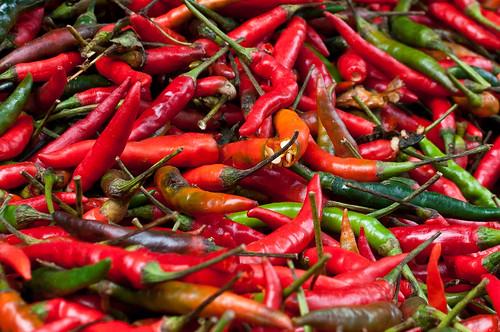
Culinary Uses
Thai chili peppers are the stars of Thai cuisine, bridging traditional flavors with innovative gastronomy. Their role in Thai recipes is foundational, infusing meals with heat that is as much about tradition as it is about taste. These chilies are woven into the fabric of Thai cuisine, epitomizing the balance between spice, sweetness, and sourness.
Thai green curry leverages the vibrant heat of green Thai chilies, blending their sharpness with the richness of coconut milk and aromatic herbs. Similarly, som tam, a spicy green papaya salad, utilizes pounded green chilies to add a layer of heat, showcasing how Thai chilies can elevate simple ingredients.
Beyond Thailand, these peppers have found their way into other Asian cuisines. In Vietnamese pho, Thai bird’s eye chilies are often presented on the side, allowing individuals to personalize their level of spice. This customization reveals the adaptability of Thai chilies to personal heat thresholds.
Modern culinary explorations have pushed the boundaries of how Thai chilies can be used, demonstrating their versatility. Chefs globally are integrating these chilies into innovative dishes, such as chili-infused chocolates and cocktails, where the heat accentuates the sweetness and flavors of its counterparts. The trend of crafting artisanal hot sauces has seen Thai chilies taking center stage, offering layers of flavor that can transform a meal.
Thai chilies also play a role in infused oils and vinegars, imparting their essence steadily over time, creating versatile ingredients that bring warmth and zestiness to dishes.
From traditional Thai dishes to modern culinary innovation, Thai chili peppers embody the coexistence of intense heat and allure. Their versatility in culinary applications underscores that food is an adventure, a constant exploration of flavors and possibilities.
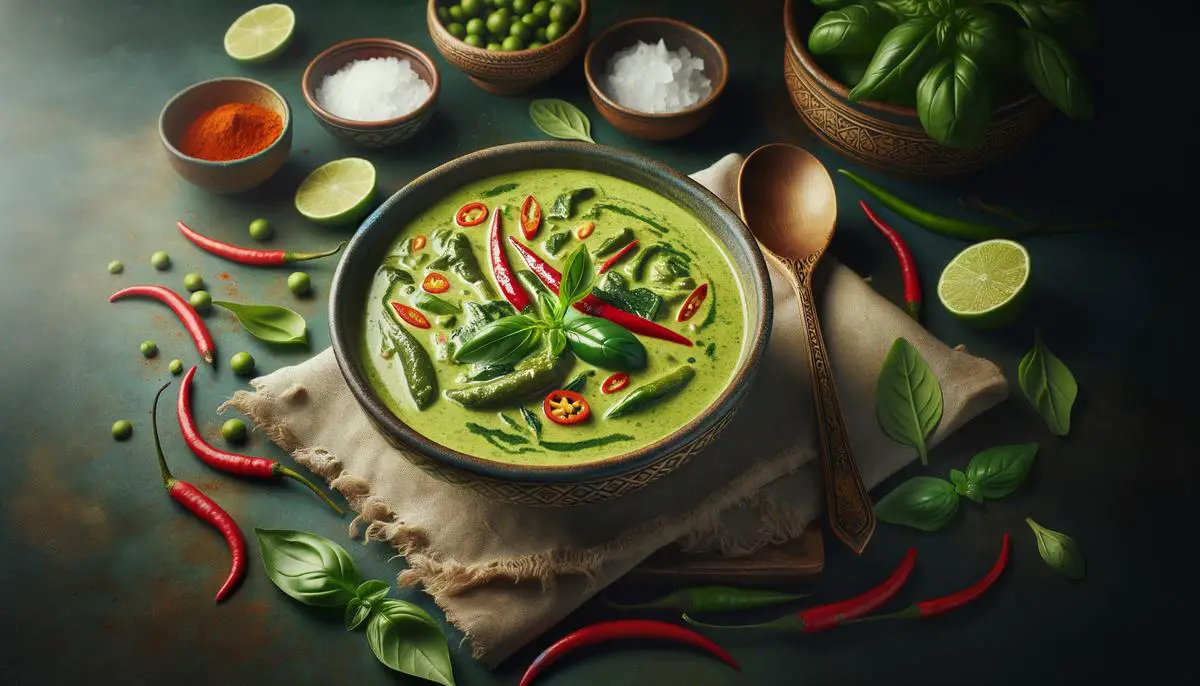
Health Benefits
Thai chilies offer not just an launching of flavors but also various health benefits, primarily due to capsaicin, the compound responsible for their heat. Capsaicin has been proven to be a potent pain reliever, interacting with pain receptors in the body to block pain transmission to the brain. Athletes and those suffering from arthritis have found relief in capsaicin treatments.1
Capsaicin also shows promise as an anti-inflammatory agent. It is theorized to fight inflammation at a molecular level, possibly reducing risks for certain long-term health conditions.2
The cardiovascular benefits linked with capsaicin invite discussion. Regular consumption of capsaicin, within moderation, is associated with maintaining healthy blood pressure levels and improving overall heart health.3 As blood vessels relax and circulation improves, it illustrates the concept of food as medicine.
However, balance is crucial in the consumption of Thai chilies and capsaicin. While their health benefits are significant, overindulgence can lead to discomfort and digestive issues. High levels of capsaicin can cause an unpleasant burning sensation for those unaccustomed to intense heat. Moderation is key, embracing the heat while respecting its power.
The journey through Thai chilies, from garden to table and into bodily health, uncovers a spectrum of benefits wrapped in layers of heat and flavor. It fosters a deeper understanding and appreciation for these small but mighty peppers, encapsulating the relationship between diet and health. These small elements of nature hold diverse powers, reminding us that sometimes, the smallest things pack the most potent punch.
Growing and Harvesting
Thai chili peppers thrive in the gardens they inhabit. These capsicum cultivars demand adherence to their tropical predisposition, originating from climates that bask in warmth and humidity. The ideal conditions mimic their native homeland: temperatures ranging between 70°F to 80°F (21°C to 27°C), and well-draining soil that retains moisture.
Soil with a slight acidity to neutral pH (between 6.0 and 7.0) becomes the foundation for growth. The addition of organic matter, such as compost or well-rotted manure, enriches the soil with nutrients and enhances its structure.
Thai chili seedlings, often started indoors early in the spring, are transplanted outdoors after the last frost when warmth becomes constant. Planted at a spacing of 18 to 24 inches apart, these plants develop into verdant shrubs dotted with fiery peppers.
With diligent tending—watering, weeding, and pest control—harvest time arrives. The peppers manifest in a kaleidoscope of hues from green to rich crimson and orange as they mature. This chromatic shift signifies readiness and hints at the deepening complexity of flavors.
Harvesting these chilies allows for immediate fresh uses, but preservation methods like drying prolong enjoyment. Sun-drying sees peppers strung and hung, transforming under the sun into shriveled treasures of spice. Oven drying offers a quicker route to the same end.
As these peppers transform, their spirit remains untamed—locked within are the scorching whispers of heat and sultry murmurs of flavors that define Thai cuisine. Preserving these chilies pays homage to agricultural wisdom intertwined with culinary tradition, ensuring each pepper carries the essence of Thai heritage and the promise of gastronomic adventures.
The journey of Thai chili peppers from soil to supper blends into the eclectic mosaic of food culture. In growth, as in dining, the journey of these peppers embodies a confluence of tradition, passion, and the relentless pursuit of flavor.
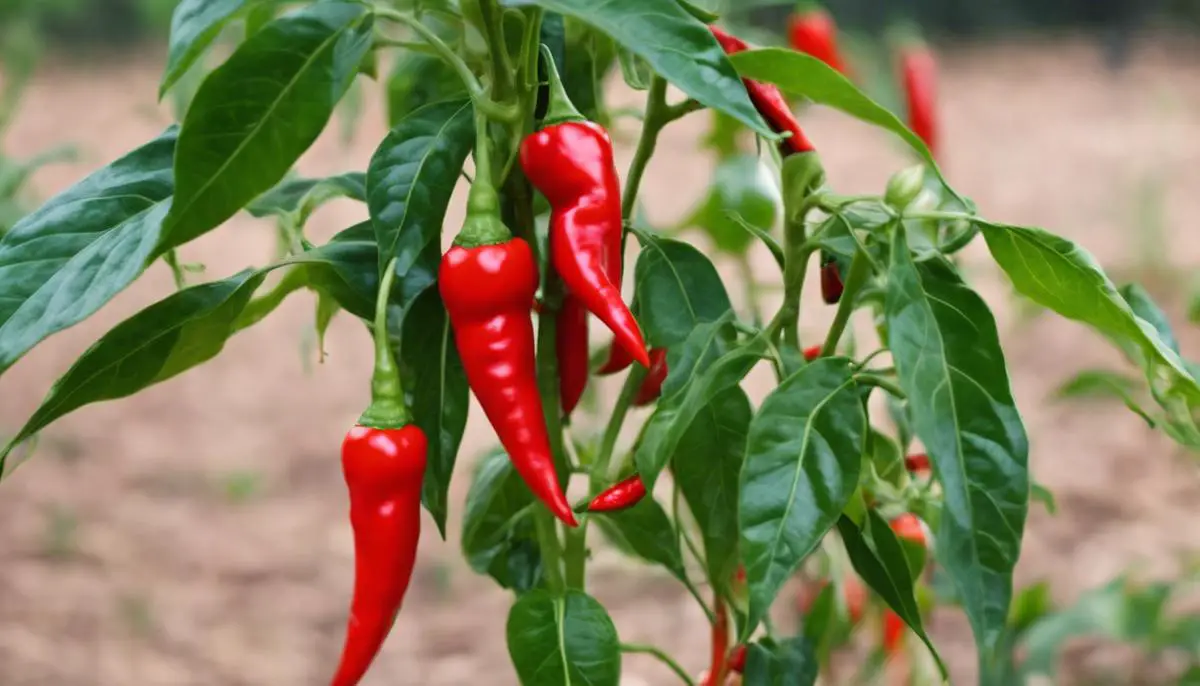
Thai chili peppers transcend mere spiciness, embodying a tradition of culinary excellence that invites appreciation for the subtleties of flavor they contribute. Their ability to infuse meals with both heat and depth underscores that food is an adventure, a sensory exploration that challenges and delights, with Thai chilies serving as a guide on this flavorful journey.
- Fattori V, Hohmann MS, Rossaneis AC, Pinho-Ribeiro FA, Verri WA. Capsaicin: Current Understanding of Its Mechanisms and Therapy of Pain and Other Pre-Clinical and Clinical Uses. Molecules. 2016;21(7):844.
- Luo XJ, Peng J, Li YJ. Recent advances in the study on capsaicinoids and capsinoids. Eur J Pharmacol. 2011;650(1):1-7.
- McCarthy M, Prakash S. Potential Cardioprotective Effects of Dietary Capsaicin. J Amer Coll Cardiol. 2020;75(11 Supplement 1):3708.


